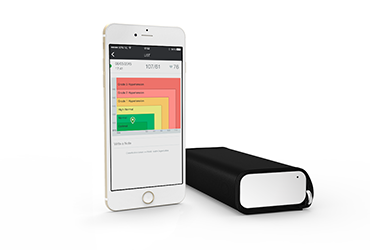Hypertension, also known as high blood pressure, is a medical condition in which the blood pressure in the blood vessels is constantly high. Blood pressure is measured by two numbers. Systolic blood pressure is the pressure exerted on the blood vessels when the heart beats. Diastolic blood pressure is the force exerted when the heart rests between beats. Blood pressure is measured in millimeters of mercury (mmHg).
In most cases, hypertension does not present major symptoms. Some patients often report headaches, nosebleeds, or even breathing difficulties. However, these symptoms usually occur when blood pressure reaches very severe states.
Primary hypertension
Also known as essential hypertension, it is a type of high blood pressure that is not linked to a secondary cause, disease, or medical condition. Most adults with hypertension fall into this category, and It represents 95% of all cases. The cause is still unknown, but research indicates it might be linked to age, genetics, and lifestyle.
Secondary hypertension
It is linked to an identifiable cause. Kidney disease, obesity, depression, and sleep disorders can lead patients to become hypertensive. It represents only 5% of cases and sometimes can appear as a side effect of other medications.
Isolated systolic hypertension
Normal blood pressure is considered when the systolic blood pressure is between 120 and 129 and the diastolic blood pressure is between 80 and 85. If the systolic blood pressure rises above 140, but the diastolic blood pressure stays below 90, the patient is considered to have isolated systolic hypertension. According to the National Center for Biotechnology Information, 15% of people 60 years old and above have isolated systolic hypertension.
Malignant hypertension
This is the term used to describe extremely high blood pressure that damages organs. A person who has systolic blood pressure above 130, and diastolic blood pressure of 86 or above, is considered to be hypertensive. When hypertensive patients have a rapid increase in their blood pressure, it is considered to be a hypertensive crisis. This requires instant medical treatment as it could lead to heart attack, stroke, blindness, or kidney failure.
Resistant hypertension
When patients are diagnosed with hypertension, they are asked to make changes to their lifestyle or take some medications to lower their blood pressure. However, if their blood pressure does not improve over time, it means their high blood pressure is hard to treat and might be a secondary cause.
Managing your blood pressure
Lifestyle and diet
It is important to know which conditions can lead you to have high blood pressure and become hypertensive. As you advance in age, you become more likely to develop high blood pressure, especially after age 65. Other factors include race and family history, but more importantly, is how your lifestyle affects your health. Stress, alcohol, eating food high in salt and fat, tobacco, and lack of physical activity are among the main causes of developing high blood pressure. Reducing their consumption can lead you to have a more healthy lifestyle and reduce the risk.
Measure your blood pressure regularly with QardioArm
The first step to knowing if you have high blood pressure is by measuring it. At Qardio, we have the goal to help you on your health management journey by developing health monitoring devices that fit your modern lifestyle. QardioArm is a clinically validated, portable, and easy-to-use blood pressure monitor that is 4 times more effective at lowering your blood pressure. It helps you measure your systolic and diastolic blood pressure, detect arrhythmias or any abnormalities in your heartbeat, and your data can be shared with your doctor for remote monitoring.
Sources




